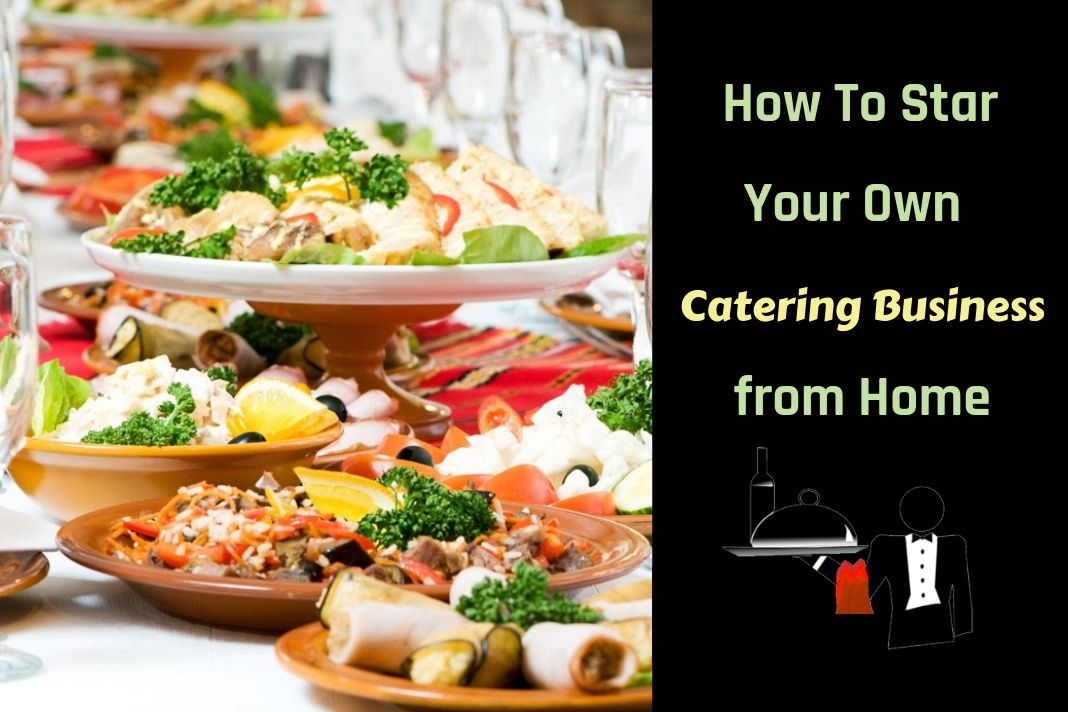
If you want the world to savor your food because you know you can plan and prepare an excellent buffet, but at the same time you don’t want to open a restaurant, the catering business is exactly the right choice for you. The catering business is nothing like running a restaurant. You can start it at home and cook for family and friends’ events and functions. It is one of the great ways to monetize your passion.
In this blog, we will tell you what it requires to start a catering business. You can go through the steps and determine whether you will be able to pursue it.
What Goes into A Catering Business
You need great cooking skills, determination and charm to be able to successfully pursue a catering business. When it comes to catering, quality, taste, and quantity of the food get precedence over presentation and ambiance. You can earn between $30,000 and $ 90,000 a year, based on your popularity and order fulfilments. You can make this a home-based business or a part-time business. In fact, there are many ways to run a catering service, it totally depends upon your budget and interest.
You can start by focusing on a particular niche, such as a particular food or certain kinds of events. For instance, you can start an executive catering business by serving lunches and dinners to corporate employees or you can pack, and send food along with servers to various parties, events, small-sized functions, and family reunions.
Steps Involved in Starting Your Catering Business
Step 1: Research the Market
Research who else is running a catering service in your area. This should be your first step. Go through their menu, check the kind of catering services they are providing, have a look at their prices, quantity offered and the kind of customers they serve.
Look for benefits. As in why do the people buy food from caterers instead of regular hotels or restaurants? To be a successful caterer you will have to consider factors like price, convenience, unique menu, style, packaging, and white-glove service.
If you are planning to do a home-based catering, then the best way to get the right information is by conducting a survey with your friends, family, and immediate social circle. Ask which catering service they prefer and why; what they liked the most about the caterers and what exactly they look for in other caterers.
Step 2: Choose Your Niche
You have to decide what kind of catering service you want to offer. After going through your current marketplace, you will want to select a specific and unique niche. Your niche will be your major selling point. You have to decide what kind of food or service would attract enough customers to make a profit.
For instance, if the market lacks corporate catering, you can offer executive meals delivered to offices or if the market does not have small sized catering services, say for 40 -80 people, you could try your hand at it.
You have to determine your niche and develop your product and services to target specific customers. To begin with, you can go with a very narrow approach and offer only a limited variety of catering services. If you offer everything to everyone, you may not be able to handle the pressure.
However, you can start by including a broader variety of services later as you grow. Some of the common niches you can target entails;
- Lunch boxes for corporates and schools
- Stalls in festival, concerts, and event
- Corporate events, such as parties, luncheons, banquets
- Family parties, such as birthdays, anniversaries, dinner parties, get-together, bachelorette, etc.
- Club parties
- Weddings
- Picnic and holidays
You can further narrow your niche to specific food types, like grilled, barbeques, finger-foods, vegan, diabetic food etc.
Step 3: Find Your Right Customer
Once you have researched your market and decided on your niche, you will have to look for customers. Step 2 and Step 3 can be interchangeable. You can either choose your customers first and create your menu and niche or choose your customers based on your menu/ niche.
Contact your peers, customers and business circle to find your potential customers. You can cold-call a few customers or connect with major corporates for business opportunities. Let them know what you are selling and how your food can be profitable for them. You have to use multiple promotional strategies, including website, brochures, pamphlets, social media posts, and traditional marketing approaches.
However, as a beginner, the best set of customers could be found amongst your friends, family, and relatives. Follow them first.
Step 4: Learn Business Basics
The catering business is the first step towards entrepreneurship. And no matter what type of business it is, entrepreneurs need to brush up on the basics of running a business. Obtaining a business permit and a food service license from your local or state authority should be the first step. You have to furthermore set up a business address, email account, and website, and buy liability insurance.
You will also have to check whether your business would require any zoning permit and enquire with HOA about other rules and regulations.
Food service license and food health and safety permit are two additional certificates you must obtain to run a catering business. For this, you’ll need to contact your state food and health administration department. An inspector will pay you a visit to ensure that you meet the health and hygiene standards with respect to the kitchen, cooking hygiene, appliances, storage, food grade, transportation, and serving.
Step 5: Create a Budget
You have to go through the numbers. You will need to create a budget to know the cost to start the catering business and the operative cost once it starts to run. You should know everything about budgeting a small business and how you can customize to suit yours.
You will have to decide on the cost spend to create the business, the pre-launch expenses and the operative cost or working capital. A home-based catering business will have a smaller budget requirement, however.
You will have to spend several thousand at least in your start-up cost, especially for the things that go into the kitchen, and licenses, permits, marketing materials, and transportation. The budget will totally depend on what you make and what you serve. For example, if you are an Indian sweet maker or planning for finger food catering, you will not have to buy expensive equipment and kitchen tools. All in all, your primary budget will be more or less between $10,000 and $12,000.
Pros and Cons of a Catering Business
Every business has its own ups and downs, and catering service is no different. It is all about taking the risk, accepting the challenges and conforming to the changes. However, since you are a beginner, we thought of brushing you up with the pros and cons of the catering business as well.
Advantages of Catering Business
- If you are an amateur chef and planning to start something safe and easy, this could be your best option
- You get to advertise your brand on the job while customers are eating your food
- One of the profitable small-scale businesses currently; top US caterers generate more than 15% of the industry revenue
- You can either keep it small and earn profits or grow bigger and earn more profits
- A very lucrative part-time business opportunity this could be. You can work on weekends, in the evenings or during the holidays
- Food is always a natural demand, this business can never go flop if you price your food appropriately and produce a quality menu
Disadvantages of Catering Business
- One bad meal and your entire business may take a pause. Your food should taste great from the very beginning. If a particular dish is appreciated, expectations towards that dish will heighten and hence you will have to maintain a great tasting standard
- At times clients can make unreasonable demands that can cause you to hurry up or make it difficult for you to provide quality work
- It can bring up a potential liability issue like unhygienic food leading to sick guests
You will always have to maintain the health and safety standards to avoid such complaints
- You have to show up every time, at the right time whenever there is an order. Unlike other businesses, catering service cannot ask for a grace period of a few You need to have a lot of organizational skills, planning and leading skills, and master of time management skills.
From creating your menu, hiring suitable staffs to buy professional cookware and contacting food vendors for supplies, you will have to take care of everything for your home-based start-up business, including order accepting and delivery. If you find the entire process a little too tedious and believe it will dampen your cooking skills, you can always hire a smart manager to handle these extra things.
Take your time to start your business. Don’t take stress thinking that you will have to create a plan and execute it in a month’s time.
If you found this article a good information source, do mention it in comments.




